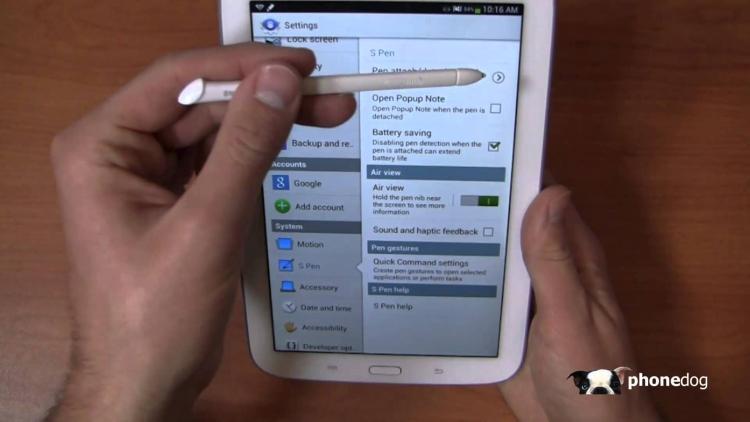
Like the iPhone, the iPad may not have been the first computer tablet on the market (by far), but it was definitely the first one that mass amounts of people cared about. The large, 10-inch tablet computer that was designed for convenience and portability quickly became a hit sensation for several demographics. With the standard phone size being between 3.5 and 4.3 inches, a 10-inch screen was a huge, but perhaps necessary leap in order to bring all of the features we had in our smartphones to a bigger and more accessible screen.
But for many, a 10-inch screen was just a tad too large of a jump from the typically smaller smartphones we were touting a few years ago, so it wasn't too long before we were also introduced to the smaller 7-inch tablet. For the most part, 10 and 7-inch tablets were pretty much the industry standard. However, when phones started to take on larger forms, the 7-inch tablet started to become noticeably dwarfed when compared to some of the smartphones that are coming out today. To people who own the phones that are 5.5, 5.8, or even 6.3 inches in size will probably find the point of a 7-inch tablet moot.
7-inch tablets are still rather popular, especially because 7-inch tablets seem to come in a cheaper package than the more expensive 10-inch tablets on the market today. You have tablets like the Google Nexus 7, the Amazon Kindle Fire line, Samsung Galaxy Tab 7.0, and not to mention the countless others on the market. But just how long will the 7-inch screen tablet last, especially with smartphones on the non-stop train to Bigify Land?
I've been noticing an influx 8-inch tablets being made lately. Following the release of the iPad Mini, which many people speculated to be a 7-inch tablet but turned out to be an 8-inch tablet instead, he first 8-inch tablet I ever took interest in was the Galaxy Note 8.0, which I thought was appropriate considering that the Galaxy Note line seems to always be taking it a step further when it comes to size in order to accomodate more space for the use of their included stylus. I thought it seemed like a good idea, especially considering I found 10-inch tablets to be too big to hold comfortably, and 7-inch tablets too small for what I wanted to draw. An 8-inch screen with the S Pen included seemed like the perfect match for a tablet that I would want. And so far, it has been pretty perfect when I use it. Aside from the fact that I don't use a tablet for much other than the occasional doodle now-a-days, I have no issues with it when I do use it.
The second half of 2013 seems to be pushing more towards the release of more 8-inch tablets, like with LG's G Pad and Lenovo's Yoga tablet (which comes in both 8 and 10-inch sizes). News surfaced recently that Nokia is also reportedly working on an 8-inch tablet, and even speculation that Google is working on an 8-inch variant of the Nexus tablet. The 8-inch tablet is undeniably picking up speed, and with this increase in popularity for the slight increase in size, I do wonder if 8-inch screens will become the industry standard over the next two years. As smartphones get closer to bridging that gap between what made the 7-inch tablet so appealing to begin with, it seems that the only way to go from here is up. Overall, people seem pleased with the increase in options for larger smartphones, so it would seem that the phablet smartphones are here to stay for a while. So instead of making anything smaller, everything else looks to be growing larger.
What are your thoughts, readers? Are you a fan of the new influx of 8-inch tablets coming out, or do you prefer 7 or 10-inch tablets instead? Do you think that 7-inch tablets will soon lose importance as smartphones get bigger? Let us know your thoughts in the comments below!